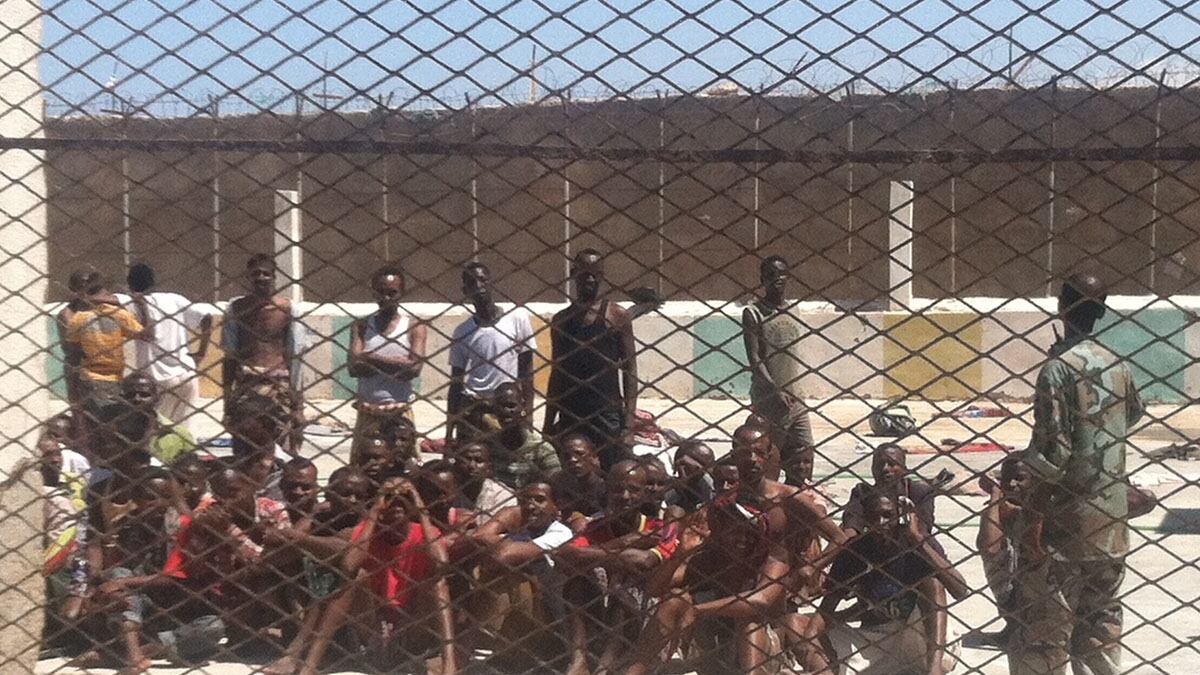
Eli Lake travels to Somalia to see where captures pirates and suspected members of Al-Shabaab end up after they are arrested. They end up in places like the Bosaso Central Prison:
One answer can be found here in the dusty Somali port city of Bosaso, where corrugated-metal shacks look as if they might be blown away in the next storm, and summer temperatures easily top 110 degrees. Overcrowded, underfunded, and reeking of urine, the Bosaso Central Prison could make even the most dedicated insurgent regret ever getting into the terrorism business. Many inmates don’t have shoes, and instead of uniforms, they wear filthy T-shirts and ankle-length garments wrapped around their waists that resemble sarongs (called ma-awis in Somali). When I visited earlier this year, the warden, Shura Sayeed Mohammed, told me he had 393 prisoners in a place designed to hold no more than 300. He said that since 2009, he had received 16 inmates captured by Americans.
...
Alan Cole, a program coordinator for the counterpiracy program of the U.N. Office of Drugs and Crime, oversees a project to renovate the prison. “The big issues are overcrowding, lack of running water, and lack of sanitation,” said Cole. Just this month, the agency managed to fix one of those problems when it installed running water for the first time. Previously, water was brought in on trucks, which were at times delayed. The U.N. is now working on a plan to add extra rooms that will accommodate 200 more prisoners, and a new wing for women. Cole says one cell designed for 30 people will sometimes hold 100 people, a problem made worse during the hot summer months. “When you have overcrowding in a cell that is very hot, guys end up with skin disease that spreads very quickly. It’s like a heat rash, they start bleeding, it passes onto the other prisoners,” says Cole.
Lake notes that Bosaso Central Prison is a symptom of new anti-terror policies which do not rely on using Guantanamo Bay or CIA black sites in Europe:
Bosaso, along with other remote prisons around the world, is one of the less well-known and least-understood aspects of the war on terror. When President Barack Obama came into office, he expanded the scope of Central Intelligence Agency and military-drone operations in the Islamic world, while also taking steps to end America’s role in detaining suspects captured overseas in that war. He shut the remaining CIA black site prisons in Europe, and handed over high-value Iraqi detainees to the Iraqi courts. Guantanamo Bay no longer takes new inmates, though it continues to house prisoners who haven’t yet been transferred to other countries.
...
In practice, however, Obama’s plan to get America out of the international jailer business means that developing-world prisons have picked up the slack. A look inside the Bosaso prison provides a snapshot of what life is like in a post-Gitmo world. Many of the prisoners here are alleged pirates, captured in the coastal Somali towns that have become breeding grounds for international piracy. Others are suspected Islamic insurgents of al-Shabab, a group affiliated with al Qaeda.





